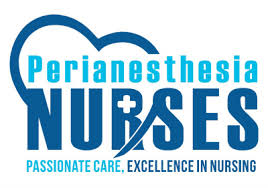February 5 through 11 is a national observance of National PeriAnesthesia Nurse Awareness Week, sponsored by the American Society of PeriAnesthesia Nurses (ASPAN). Nurses who help transition patients pre- and post-procedure are there to offer intensive medical care and equally essential caregiving. They especially want patients to know they are there for them. They are their advocates throughout the process.
If you are interested in a career as a perianesthesia nurse, you’ll find the challenges of the position range from using your advanced nursing skills in urgent situations to incorporating the most basic hands-on comfort skills. Charged with caring for patients at critical pre- and post-procedure points, perianesthesia nurses must be able to multitask, to identify and respond to patient conditions immediately, and to do this all with a calm demeanor to help keep patient stress at bay.
Perianesthesia nurses especially enjoy their work caring for patients before and after procedures that require any anesthesia. Before a procedure, they are the nurses who are there to find out any information that could have an impact on the anesthesia care. With more and more patients appearing with several health conditions, they have to factor in variables like medications, physical condition and limitations, and emotional stability in their patient assessment. While they are assessing and gathering information, they are also providing a calm and unwavering support to help nervous patients know they are in trusted hands.
Perianesthesia nurses are also there when patients come out of anesthesia and are sometimes confused, uncomfortable, or even nauseated or vomiting. Post-procedure, nurses are once again continually monitoring a patient, assessing vital signs, reassessing existing health conditions, and at the same time, offering that hands-on caregiving that helps patients feel safe. Perianesthesia nurses then help determine how a patient can safely move to their next place whether that is to home, another hospital, or another care facility.
Many perianesthesia nurses say they have perfected a way to develop a rapport with patients that can build the trust necessary for completing such a long task list in a short time and under pressure. Once a nurse has identified a topic that helps the patient relax, they can begin conversations about family, pets, schooling, movies, or books that are both informative for nurses and distracting for patients. Many nurses also say they use those nuggets in the conversation to help bring a patient out of a drowsy and sometimes confused anesthesia.
For those considering this branch of nursing, ASPAN offers many resources and is an excellent reference to find out information about certification (through the American Board of Perianesthesia Nursing Certification, Inc.) that must be renewed every three years, scholarships for education, career resources, mentoring opportunities, conferences, and up-to-date anesthesia information.
This week, recognize and appreciate the perianesthesia nurses on your team. Their skills often help the entire procedure proceed smoothly and safely.
- Is the FNP Program Right for You? - April 24, 2024
- WOC Nurses Week Highlights Specialty - April 16, 2024
- Honoring Radiology Nurses Day on April 12 - April 12, 2024



